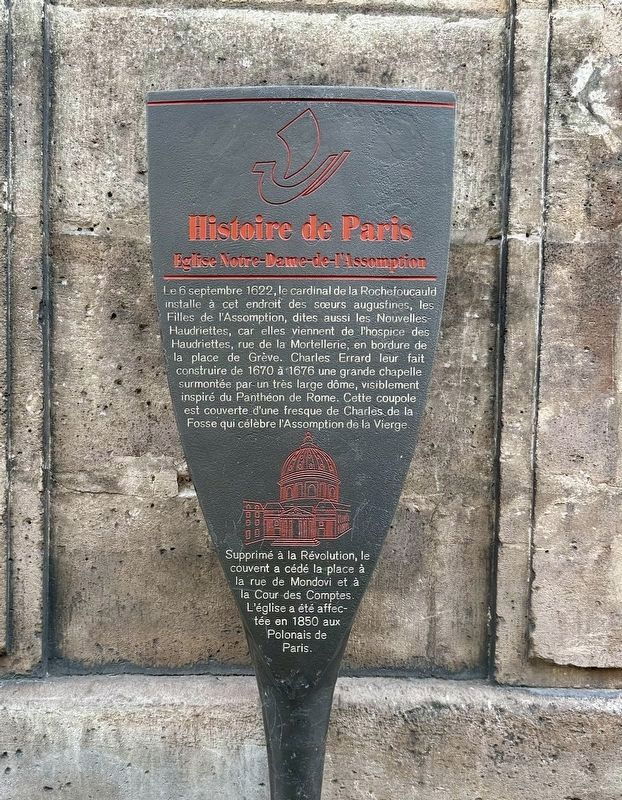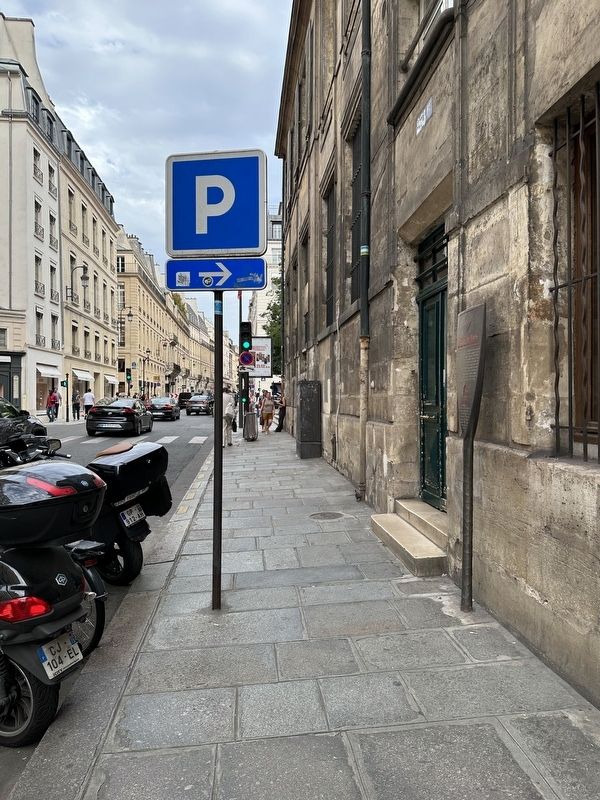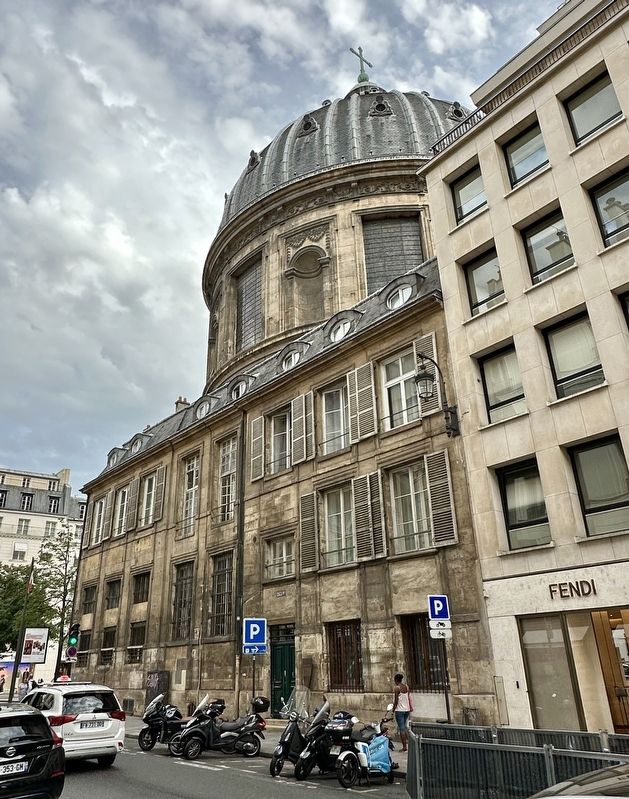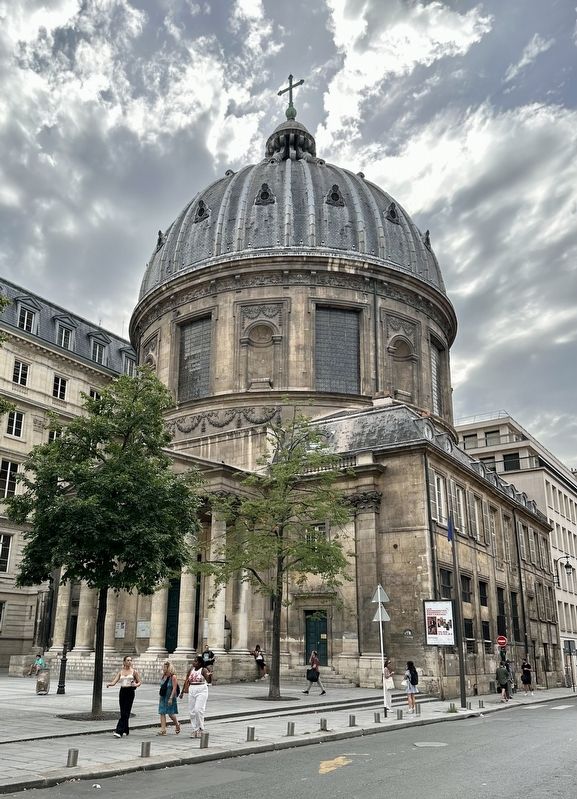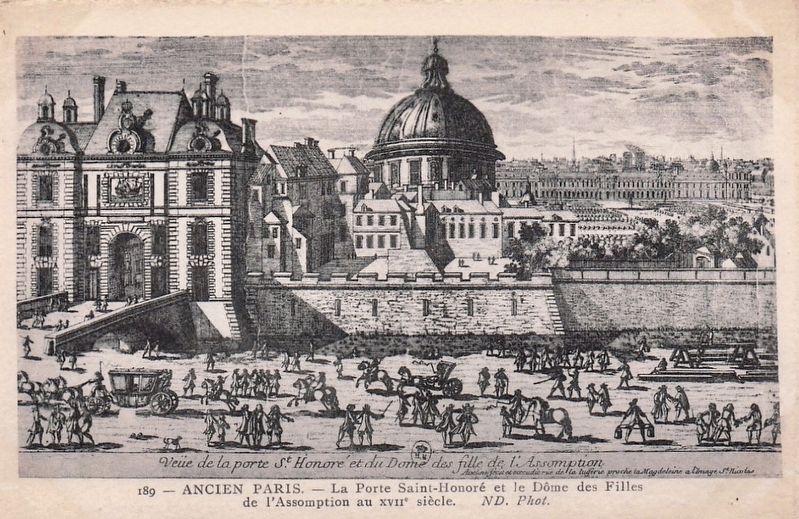Place Vendôme in Paris in Département de Paris, Île-de-France, France — Western Europe
Church / Eglise Notre-Dame-de-l’Assomption
— Histoire de Paris —
Inscription.
Supprimé à la Révolution, le couvent a cédé la place à la rue de Mondovi et à la Cour des Comptes. L'église a été affectée en 1850 aux Polonais de Paris.
On September 6, 1622, Cardinal de la Rochefoucauld installed Augustinian nuns, the Daughters of the Assumption, also known as the Nouvelles-Haudriettes, at this location, because they came from the Haudriettes hospice, rue de la Mortellerie, on the edge of Place de Grève. From 1670 to 1676 a large chapel topped by a very large dome, visibly inspired by the Pantheon in Rome, was constructed for them by Charles Errard. This dome is covered with a fresco by Charles de la Fosse which celebrates the Assumption of the Virgin.
Abolished during the Revolution, the convent gave way to rue de Mondovi and the Court of Auditors. The church was assigned in 1850 to the Poles of Paris.
Topics and series. This historical marker is listed in these topic lists: Churches & Religion • Women. In addition, it is included in the Histoire de Paris series list. A significant historical date for this entry is September 6, 1622.
Location. 48° 52.055′ N, 2° 19.531′ E. Marker is in Paris, Île-de-France, in Département de Paris. It is in Place Vendôme. Marker is on Rue Saint-Honoré, on the right when traveling east. Touch for map. Marker is at or near this postal address: 398 Rue Saint-Honoré, Paris, Île-de-France 75001, France. Touch for directions.
Other nearby markers. At least 8 other markers are within walking distance of this marker. Cour des Comptes / Court of Accounts (about 90 meters away, measured in a direct line); Henry Dupuy de Lôme (about 90 meters away); Madame Geoffrin (about 90 meters away); Plan Marshall / The Marshall Plan (about 180 meters away); Orville J. Cunningham (approx. 0.3 kilometers away); Jean-Baptiste Lully (approx. 0.3 kilometers away); Andre Chantemesse (approx. 0.3 kilometers away); Couvent et Club des Feuillants (approx. 0.3 kilometers away). Touch for a list and map of all markers in Paris.
Also see . . . Notre-Dame-de-l'Assomption, Paris (Wikipedia).
History: In the 17th century, a house belonging to the Jesuit order on the corner of Rue Saint-Honoré and what is now Place Maurice-Barrès, was ceded to the women's religious order of the "Ladies of the Assumption" ("Dames de l'Assomption") who transformed the site(Submitted on January 22, 2024.)into a convent under the aegis of architect Charles Errard in 1670. He, it appears, keen on Italian art and its relics from Antiquity and the Renaissance used them as inspiration for the project, in addition to his own style. As he was detained in Rome doing his research, the execution of the building was assured by a M. Chéret, the clerk of works. On his return, in the face of criticisms of the work, Charles Errard blamed Chéret for having modified his plans.
Subsequently the convent of "Les Dames de l'Assomption" was used as a refuge into the religious life by certain well-born women from the Royal Court under the Ancien Régime. When the French Revolution struck, the building became military barracks in 1793. After the French Restoration, the abandoned building was donated by Monsignor Affre to the Polish Catholic Mission in 1844 for use by the many Polish migrants in Paris at that time.
In 1907 the church was listed as an historical monument.
Credits. This page was last revised on January 22, 2024. It was originally submitted on January 22, 2024, by Andrew Ruppenstein of Lamorinda, California. This page has been viewed 50 times since then. Photos: 1, 2, 3, 4, 5. submitted on January 22, 2024, by Andrew Ruppenstein of Lamorinda, California.
